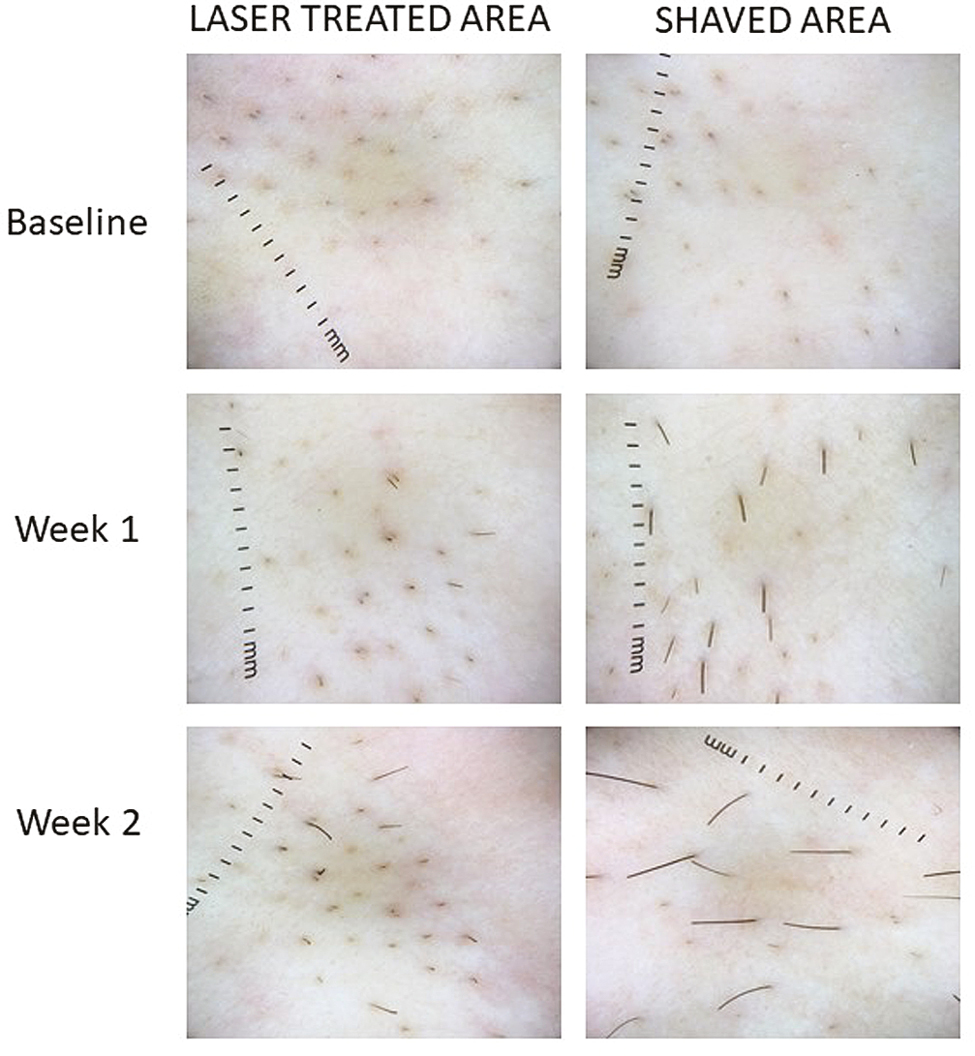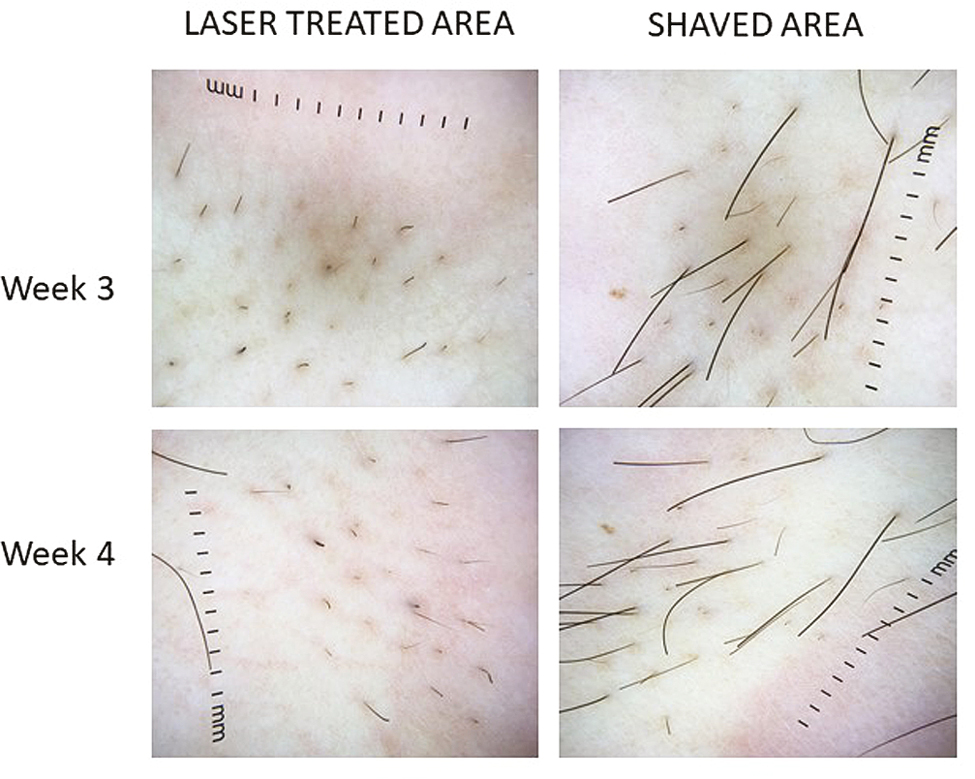Translate this page into:
A Dermoscopic Analysis of Hair Growth Rate Comparison Between LASER and Shaved Hair
Address for correspondence: Dr Sudhir U. K. Nayak, Department of Dermatology, Venereology, and Leprosy, Kasturba Medical College, Manipal, Manipal Academy of Higher Education, Manipal, India. E-mail: sudhirnayakuk@yahoo.com
This is an open access journal, and articles are distributed under the terms of the Creative Commons Attribution-NonCommercial-ShareAlike 4.0 License, which allows others to remix, tweak, and build upon the work non-commercially, as long as appropriate credit is given and the new creations are licensed under the identical terms.
This article was originally published by Wolters Kluwer - Medknow and was migrated to Scientific Scholar after the change of Publisher.
Light amplification by stimulated emission of radiation (LASER) hair reduction (LHR) is one of the most popular methods of semi-permanent hair reduction being practiced for cosmetic as well as clinical indications. One of the most frequently asked questions by patients is the efficacy of the procedure, which is determined by the amount of reduction of hair and reduction in the rate of growth of hair. Experience and data from various studies have shown that LHR using the newest technologies reduces the density of hair by 50–70%.[1] Furthermore, most studies use pictorial comparison and manual counting to determine the reduction of hair, which can raise a lot of questions on the issue of objectivity of the analysis. Very few studies have mentioned anything about the rate of hair growth or compared it with conventional hair removal practices. Here we compare the rate of growth of hair in corresponding areas after removal by LASER and shaving and objectively assess it using dermoscope in a single subject.
A male patient with no underlying comorbidities was selected for the procedure. After explaining the procedure and the purpose of the study, an informed consent was obtained. Corresponding areas of 1.5 × 0.5 cm on the dorsa of hands on the ulnar side were shaved. Rest of the dorsa of hand had naturally no hair, thus making it certain that all hairs will be lased and measured at baseline and follow-up. One hand was treated with the 800 nm diode Lumenis LightSheer LASER at a fluence of 20 J/cm2, whereas the other hand was used as a comparative control. Baseline and weekly pictures were taken using the handheld DermLite DL4 dermoscope and iPhone 6S camera. The length of hair was evaluated with the help of an inscribed measurement scale on the faceplate of the dermoscope, which are described in [Table 1] and [Figures 1 and 2].
| Timeline | Length of hair after LASER treatment (mm) | Length of hair after shaving (mm) |
|---|---|---|
| Baseline | 0 | 0 |
| After 1 week | 0 | 1 |
| After 2 weeks | 0.5 | 3 |
| After 3 weeks | 1 | 6 |
| After 4 weeks | 1 | 7 |

- Comparison of hair growth of LASER versus shaved area at baseline and weeks 1 and 2

- Comparison of hair growth of LASER versus shaved area at weeks 3 and 4
LASERs are said to be superior to other methods of hair removal because it causes the replacement of terminal hairs by vellus hairs, thus decreasing the thickness and growth of hair over the treatment site. Evidence describes significant delay in hair regrowth after treatment which can last from weeks to months which is improved when the treatment is repeated at regular intervals.[2]
The delay in hair growth has mostly been an observational and experimental finding. We attempted to do so by using dermoscopic images. Compared with the baseline, the hair growth was 1 mm over the LASER-treated area and 7 mm over the shaved area at the end of 4 weeks. In one session, 17 hairs grew back in the lased side versus 25 in the shaved side. Also the hair was thinner in the lased side. This substantial difference was seen after only one session of LASER treatment. The decrease in the rate of hair growth is an important parameter to assess the efficacy of LASER hair reduction. By comparing shaving and lased areas under a dermoscope, we were objectively able to see the rate and thickness and the number was five less in the lased side versus the shaved side. Unlike a magnifying lens which has a low magnification, dermoscope has a 10× magnification and this can be further increased by attaching a camera. Camera can be easily attached to a dermoscope, thereby standardizing the distance of photograph unlike a magnifying lens. Dermoscopy is a simple and objective method which can be used in future studies to objectively quantify the effectiveness of LASER hair reduction. It can also be extrapolated to see the variation in different groups of individuals. Studies with larger population and different body parts will be needed to be carried out to further confirm this.
Financial support and sponsorship
Nil.
Conflicts of interest
There are no conflicts of interest.





